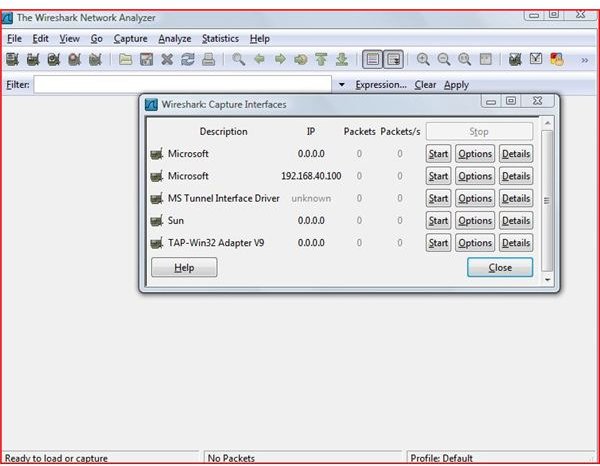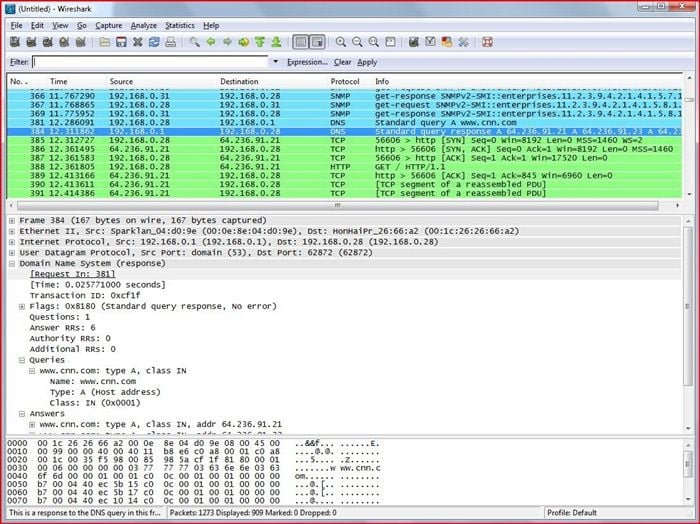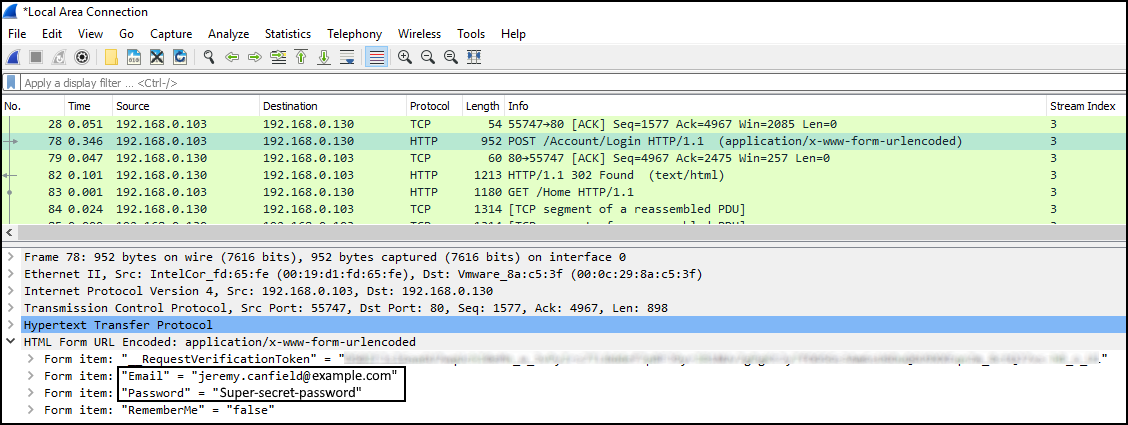
 Troubleshoot vulnerability checks to understand false positives and false negatives. Understand what network traffic the vulnerability scanner is sending.
Troubleshoot vulnerability checks to understand false positives and false negatives. Understand what network traffic the vulnerability scanner is sending.  Extract large DNS responses and other oddness which may indicate malwareĮxamination of Port Scans and Other Vulnerability Scan types. Filter out the "normal" and find the unusual. Use IO graphs to discover regular connections (beacons) to command and control servers. Search for unusual domains or IP address endpoints. Detect anomalous behaviour that could indicate malware. Similar to the HTTP export option but able to extract files transferred over SMB, the ever present Microsoft File Sharing protocol. Export objects from HTTP such as javascript, images, or even executables. Ack of server acknowledging the request. Troubleshoot DHCP issues with packet level data View SMTP or POP3 traffic, reading emails off the wire. View Telnet sessions, see passwords, commands entered and responses. View full HTTP session, seeing all headers and data for both requests and responses. Here are a few example use cases: Troubleshooting Network ConnectivityĮxamination of Application Layer Sessions (even when encrypted by SSL/TLS see below) Wireshark can be useful for many different tasks, whether you are a network engineer, security professional or system administrator. Wireshark generates files in the PCAP format.Examples to Understand the Power of Wireshark Click the seventh icon, Save this capture file., select a location to save your Wireshark file, name your file, then click Save. From the Wireshark toolbar, click on the fourth icon, Stop the running live capture. Perform your regular duties until you encounter the issue, then return to the Wireshark application window on your desktop. Launch Outlook, or email client of choice. Click Start, and your Wireshark application will start to monitor your connection activity for POP. Tcp and (port 3535 or port 80 or port 25) Complete the following fields depending on which protocol you want to track, and then click OK: Type. From the Capture menu, select Capture Filter.
Extract large DNS responses and other oddness which may indicate malwareĮxamination of Port Scans and Other Vulnerability Scan types. Filter out the "normal" and find the unusual. Use IO graphs to discover regular connections (beacons) to command and control servers. Search for unusual domains or IP address endpoints. Detect anomalous behaviour that could indicate malware. Similar to the HTTP export option but able to extract files transferred over SMB, the ever present Microsoft File Sharing protocol. Export objects from HTTP such as javascript, images, or even executables. Ack of server acknowledging the request. Troubleshoot DHCP issues with packet level data View SMTP or POP3 traffic, reading emails off the wire. View Telnet sessions, see passwords, commands entered and responses. View full HTTP session, seeing all headers and data for both requests and responses. Here are a few example use cases: Troubleshooting Network ConnectivityĮxamination of Application Layer Sessions (even when encrypted by SSL/TLS see below) Wireshark can be useful for many different tasks, whether you are a network engineer, security professional or system administrator. Wireshark generates files in the PCAP format.Examples to Understand the Power of Wireshark Click the seventh icon, Save this capture file., select a location to save your Wireshark file, name your file, then click Save. From the Wireshark toolbar, click on the fourth icon, Stop the running live capture. Perform your regular duties until you encounter the issue, then return to the Wireshark application window on your desktop. Launch Outlook, or email client of choice. Click Start, and your Wireshark application will start to monitor your connection activity for POP. Tcp and (port 3535 or port 80 or port 25) Complete the following fields depending on which protocol you want to track, and then click OK: Type. From the Capture menu, select Capture Filter.  Wait approximately 30 seconds, and then click Stop running the live capture. Launch your FTP client or Web browser and try to connect to your hosting account. Next to the interface that has the highest number of packets, click Start. From the Capture menu, select Interfaces.
Wait approximately 30 seconds, and then click Stop running the live capture. Launch your FTP client or Web browser and try to connect to your hosting account. Next to the interface that has the highest number of packets, click Start. From the Capture menu, select Interfaces. 
Use one of the sections below, based on the type of information we need from you: FTP While there are numerous programs that can capture this information, we recommend using Wireshark. If you have experienced issues with your website or email, we might need information about your connection to our servers.








 0 kommentar(er)
0 kommentar(er)
